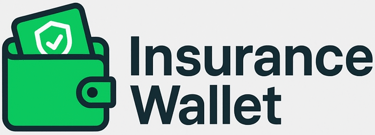💰 The Principle of Indemnity – Making Good the Loss
🌟 Introduction
Imagine your car gets damaged in an accident, and your insurer pays for the repair.
Now imagine if they paid double the cost — you’d actually profit from your loss!
Would that be fair? Not at all.
That’s why the Principle of Indemnity exists — to ensure insurance compensates for loss, not creates gain.
It’s one of the most important principles that keeps the entire insurance system fair and practical.
🔍 What Does “Indemnity” Mean?
The word Indemnity comes from the Latin term “indemnis”, which means “free from loss or damage.”
In simple words,
Indemnity means restoring the insured person to the same financial position they were in just before the loss — no more, no less.
It ensures that insurance acts as a tool for protection, not a source of profit.
🏦 The Principle Explained
The Principle of Indemnity applies mainly to non-life (general) insurance — like fire, motor, or marine insurance — where financial losses can be measured.
If a loss occurs, the insurer will:
1️⃣ Assess the extent of damage,
2️⃣ Calculate the fair cost of repair or replacement (subject to policy terms), and
3️⃣ Pay the amount required to make good the loss — not to improve or enrich the insured.
👉 The goal: Restore, not reward.
💬 Simple Example
Let’s say Ravi has insured his shop for ₹10 lakh.
A fire breaks out and causes a loss of ₹2 lakh.
The insurer will pay ₹2 lakh (the actual loss).
Ravi cannot claim ₹10 lakh — because he didn’t lose that much.
This way, he is indemnified, not benefited.
If insurance paid him more than he lost, it would become a form of profit-making, not risk protection — and people might even be tempted to cause losses intentionally!
📘 Purpose of the Principle
The Principle of Indemnity serves three main purposes:
1. Prevents Profiteering: Ensures the insured doesn’t gain from a loss.
2. Promotes Fairness: Keeps the insurance system honest and balanced.
3. Controls Moral Hazard: Reduces the temptation for fraud or intentional damage.
🧮 Methods of Providing Indemnity
Insurance companies use different ways to restore the insured’s position.
These are known as Methods of Indemnification:
MethodHow It WorksExampleCash PaymentThe insurer pays money equal to the loss amount.Fire damage compensated with a cheque.RepairThe damaged property is repaired by or on behalf of the insurer.Car repaired at a network garage.ReplacementThe lost item is replaced with a similar new one.Replacing stolen machinery with a new one of same type.ReinstatementRebuilding or restoring the damaged property.Reconstructing a burnt section of a building.
These methods depend on the type of policy and the nature of the loss.
🧾 Policies That Follow Indemnity
The Principle of Indemnity applies to:
Fire Insurance
Marine Insurance
Motor Insurance
Burglary and Property Insurance
It does not apply to life or personal accident insurance — because you can’t measure a person’s life in money terms.
So, Life Insurance is not a contract of indemnity — it’s a benefit policy.
🚫 When Indemnity Does Not Apply
Indemnity doesn’t apply when:
1️⃣ The loss is not measurable in money (like emotional loss).
2️⃣ The policy is of fixed benefit type (like life or health policies).
3️⃣ The claim involves appreciation in value (like antique goods).
In such cases, insurers pay a pre-agreed amount, not an indemnity-based settlement.
⚖️ Legal Angle
The Principle of Indemnity is recognized under Section 124 of the Indian Contract Act, 1872, which defines a contract of indemnity as:
“A contract by which one party promises to save the other from loss caused by the conduct of the promisor himself, or by the conduct of any other person.”
Insurance, in practice, applies this idea — but with added principles like utmost good faith and insurable interest.
💬 Real-Life Example
A transporter’s truck meets with an accident and suffers ₹1.5 lakh worth of damage.
The insurance surveyor assesses and confirms the same.
The insurer settles the claim for ₹1.5 lakh.
👉 The insured neither gains nor loses financially.
👉 He is restored to the same position he was in before the accident.
That’s true indemnity in action.
🧠 Quick Recap
Indemnity = Compensation for Actual Loss Only
Purpose = Restore the insured to the pre-loss position
Applies to = Non-life policies (Fire, Marine, Motor)
Not applicable to = Life or Personal Accident policies
Prevents = Profiteering and Moral Hazard
💡 Key Takeaways for Agents
✅ Always explain to clients that insurance is for protection, not profit.
✅ For exams, remember the key phrase:
“Insurance aims to make good the loss — not to make a profit.”
✅ Clarify which policies are indemnity-based and which are not.
✅ Use simple examples (like car or fire damage) while training new clients or recruits.
